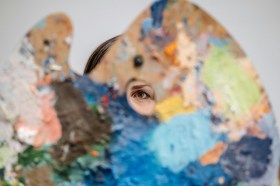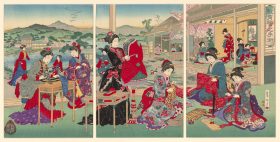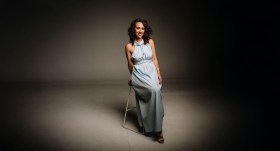Just before the long weekend break, Create NSW announced (7 June) a series of reforms to its Arts and Cultural Funding Program (ACFP).
Create NSW Chief Executive Annette Pitman said that the reforms were ‘responding directly to feedback’, gathered in Town Hall style meetings across the state during the development of Create NSW’s Creative Communities policy, and in particular, feedback received from grant applicants.
Said to be coming into effect in June 2024 (with no precise date specified at the time of writing), news of the reforms was delivered in bullet points. However, there is nowhere online for the sector to read the entire overhauled policy in order to fully understand how the reforms might impact them.
Speaking with ArtsHub, a Create NSW spokesperson confirmed a webinar will be presented on Wednesday 12 June, aimed at answering the many question about the changes raised by the sector in the last few days.
Jump to:
Feels like déjà vu?
The reform comes just five years after the last major overhaul in 2019, delivered under then-Minister for the Arts Don Harwin. The verbiage around that revamp was that the changes were intended to ensure that the delivery of grants, how they were applied for and also assessed, was more streamlined.
Clarity and ease has obviously remain a problem – testament to the need for this ‘new approach’, as it is being labelled.
A formal statement from Create NSW explains: ‘This transformation to the program provides a simpler, fairer and faster model for arts funding, designed to drive long-term growth and sustainability across NSW’s arts and cultural sector’.
In a promotional video for the new look ACFP, Karen Rodgers, Director Arts, Create NSW states that these changes will, ‘level the playing field for applicants’.
But for many working in the arts across NSW, the tone and priorities of the reformed model has come as a surprise and sparks deep concern. Among those concerns is the reduction in funding categories under the tagline ‘Simpler’, which heightens the competitive nature of the process and disadvantages smaller organisations, as they are pooled against the majors, arguably eroding a foundation of ‘fairness’.
With regard to ‘Faster’, that has yet to be demonstrated.
So what’s new?
So how “changed” is the ACFP really – or is it just another bureaucratic spend designed to create the appearance of transparency while funding remains at a point of crisis for artists, creatives and organisations?
In a nutshell (and quoting Create NSW), the recent reforms include:
A Simpler process to apply for funding with:
- every aspect of the process improved to simplify the user experience
- funding programs streamlined from 14 to four (details below)
- 25% less paperwork required for applications, and
- 50% less time-consuming reporting required.
A Fairer model for all:
- all eligible organisations will have the opportunity to apply for multi-year funding through an open, competitive, transparent process, and
- project funding targeted to engage priority groups to ensure artists, arts workers and audiences reflect the diversity of the people of NSW.
Faster processes and outcomes:
- funding decisions assessed and determined faster by refreshed Art Form Boards
- pre-application support resources and meetings available for applicants, and
- administrative improvements mean applicants can apply for and receive funding faster.
Speaking with a concerned arts manager within the Regional Arts Development Organisations (RADO) network, they said that under the new model, RADOs will be pitted against the majors – organisations such as the Art Gallery of NSW, the Museum of Contemporary Art Australia, Sydney Theatre Company or Sydney Opera House, for example – when applying for funding.
Further, it has been suggested to ArtsHub that that process can’t be entirely “fair” for all when it articulates clear funding “priorities”, which are weighted for consideration in the new funding model (again, quoting Create NSW) towards:
- First Nations stories and communities
- Western Sydney and regional NSW
- Next generation of creatives and audiences
- Broad and inclusive communities and content, and
- Accessibility and Equity.
How the four-stream funding model will work
To get one’s head around the new model, it’s necessary to think less about bullet point deliverables and more about practical information on how to apply for funding.
Simply, the funding program streams have been reduced from 14 to just four areas. They are: Project Funding, Regional Arts Touring, Multi-Year Funding and National Partnerships.
Project Funding has been simplified to four categories: Creative Nations (supporting First Nations arts and cultural projects), Next Steps (for individual professional and skills development), Creative Steps (creation of new work by individuals) and Cultural Access (projects by organisations and individuals that engages with NSW Government strategic priority areas including culturally and linguistically diverse, regional, and disability and d/Deaf communities).
Longer-term multi-year funding programs have been restructured as new two-year, four-year and eight-year funding categories. These categories are all based around a time frame.
The pitfall here is that all organisations – small, medium, independent and the majors – apply under the same categories.
Create NSW explains: ‘Applicants will have multiple opportunities to apply for the different categories of multi-year funding and timelines align with Creative Australia’s multi-year funding programs to avoid duplication of work for entities applying to both NSW and national programs’.
Regional Arts Touring will continue to be delivered across two rounds per year, and there appear to be no significant changes.
National Partnership agreements will not be subject to change under the reforms. These include funding agreements with NSW National Performing Arts Partnership Framework (NPAPF) organisations, the Arts Law Centre of Australia and NSW Visual, Arts, Craft and Design Framework (VACDF) organisations.
Perhaps this is where there should be capacity to include the RADOs in this funding area, to protect their future sustainability.
Read: A look at NSW’s new 10-year arts and creative industries policy
Potential to decimate regional arts network
Our RADO source says, ‘Create NSW are presenting this like they have reinvented the wheel. This new model will mean that thousands of people will be put back into a situation of unstable funding.’
There are 15 RADOs across the state, engaging hundreds of artists and delivering cultural activities across remote and rural communities.
The RADO network has historically been on a four-year negotiated funding agreement, where each organisation received a guaranteed amount within that pool. Now, each RADO will have to compete against the others, creating competition within this collegiate group that works closely together.
Exacerbating the problem is that regional arts organisations are also reliant on funding from local councils. Our source says, ‘All but six locals councils in the state are financially unviable. Councils can’t pick up that potential funding fall [created by this restructure].’
This regional arts manager was given a “heads-up” just 24 hours before the new funding model announcement last Friday. ‘They just dropped it on us,’ they said, adding that the Create NSW team continued to inform them they would ‘need us to put in a strategic plan by October 2024 for 2026. Everything has to stop now to do this, so we can reinvent our organisation and address an unknown funding round and less stability of outcome.’
They added: ‘It is the end of the network as we know it. We won’t be able to work together when we are competing in this way. The RADOs are decades old – we are a success – and we’re so much cheaper for the return we deliver. It just doesn’t make any sense.’
The news comes at a time when all Australians are feeling the financial pinch due to the economic downturn and cost of living crisis. COVID taught us that accessible arts activities are crucial for wellbeing through difficult periods, and especially in remote and regional areas.
Does the reframe address systemic funding problems?
The 2019 ACFP overhaul followed a systemic lack of transparency and funding round delays, which were seriously destabilising the sector.
At the time (2018), the sector spoke out, criticising the delays and describing the decisions as the ‘poorest funding round in history’, and calling for Create NSW to account for the mess.
They did. And a new streamlined peer review system appeared to be working. Then, old problems seemed to percolate to the surface again. In July 2020, outcomes of an already-delayed funding round were communicated to applicants by the media, or by texts from colleagues, instead of by Create NSW officials in a direct and timely manner.
Only a month later, many service organisations were teetering on the edge of non-existence due to poorly managed funding streams. The answer was to streamline, cut the red tape and process more quickly.
Looking back at that 2019 overhaul, the plan was to reduce the assessment criteria from the hurdle of a 26-checkpoint list down to just three elements for consideration. The existing 14 funding rounds were pulled back to just two annual calls for funding. That overhaul also promised greater clarity around notification dates.
Transparency was a word bandied around a lot at the time. This time around, the admin shuffle feels a bit “same same but different” with the same promises put on the table. But, with only a day’s notice off the back of a long weekend, the webinar feels poorly timed, and with little information currently accessible online, the whole process is not off to a good start.
ArtsHub will continue to explore this topic, and we would love to hear how Create NSW’s new ACFP model will impact your creative practice or organisation.
Register for the information session
To learn more, register for Create NSW’s Webinar on NSW Arts and Cultural Funding Reforms on Wednesday 12 June, from 11.30am – 12.30pm (online MS Teams). Areas covered:
- why Create NSW has reformed the Arts and Cultural Funding Program (ACFP)
- how the new funding model is simpler, fairer and faster
- the priority areas
- the streamlined funding model and timelines, and
- what the changes means for both organisations and individuals.





